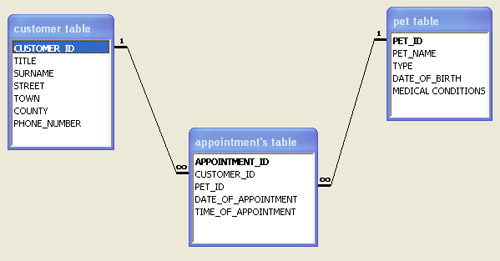here you have the data base with table and formulary
here you have it in excel format
miércoles, 8 de junio de 2016
martes, 24 de mayo de 2016
DATABASES
A database is a structured collection of records.
We use it to:
-add, remove, update records
-retrieve data that match certain criteria
-cross-reference data in different tables
-perform complex aggregate calculation
Data bases are use to store data that has any relation (books: author, themes, genre, editions...)
Databases consist of colums and rows (records).

Relational databases:
A relational database is a digital database whose organization is based on the relational model of data, as proposed by E. F. Codd in 1970. The various software systems used to maintain relational databases are known as a relational database management system (RDBMS).
A primary key uniquely specifies a list of ordered elements within a table. In order for an attribute to be a good primary key it must not repeat.
A foreign key is a field in a relational table that matches the primary key column of another table.



We use it to:
-add, remove, update records
-retrieve data that match certain criteria
-cross-reference data in different tables
-perform complex aggregate calculation
Data bases are use to store data that has any relation (books: author, themes, genre, editions...)
Databases consist of colums and rows (records).

Relational databases:
A relational database is a digital database whose organization is based on the relational model of data, as proposed by E. F. Codd in 1970. The various software systems used to maintain relational databases are known as a relational database management system (RDBMS).
- Primary key / Unique key:
A primary key uniquely specifies a list of ordered elements within a table. In order for an attribute to be a good primary key it must not repeat.
- Foreign key:
A foreign key is a field in a relational table that matches the primary key column of another table.



martes, 10 de mayo de 2016
DIGITAL SOUND
- DIGITAL SOUND VS ANALOG SOUND
Digital one is the one that catches original sound and tranfer it to digital idiom (binary system).
Sound is naturally an analog signal. An analog signal is continuous, meaning that there are no breaks or interruptions. One moment flows into the next. If you were to hum a descending note, people hearing you would be able to detect the change in pitch, but not point to specific moments when the pitch jumped from one note to the next.
Digital signals are not continuous. They use specific values to represent information. In the case of sound, that means representing a sound wave as a series of values (0 or 1) that represent pitch and volume over the length of the recording. In a primitive digital recording of that descending note you hummed, you'd hear a single long sound as a collection of shorter sounds.
Digital sample rate:
In developing an audio sound for computers or telecommunication, the sample rate is the number of samples of a sound that are taken per second to represent the event digitally.
The more samples taken per second, the more accurate the digital representation of the sound can be. For example, the current sample rate for CD-quality audio is 44,100 samples per second. This sample rate can accurately reproduce the audio frequencies up to 20,500 hertz, covering the full range of human hearing.
Bit depth is the number of bits of information in each sample, and it directly corresponds to the resolution of each sample.

Bit depth is the number of bits of information in each sample, and it directly corresponds to the resolution of each sample.
Processing
Suscribirse a:
Comentarios (Atom)


